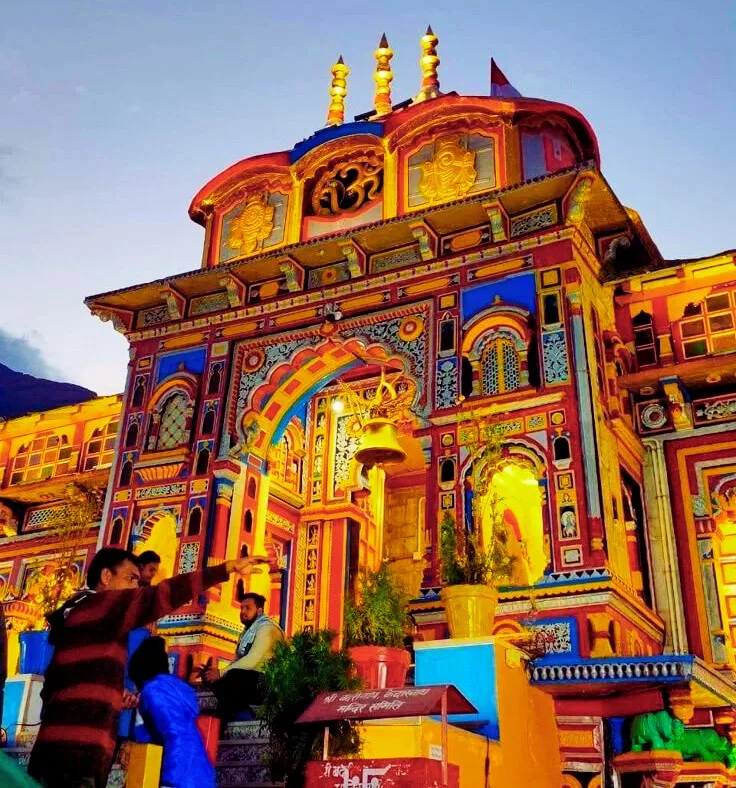



The Char Dham Yatra is one of the most revered pilgrimage circuits in India, covering the sacred shrines of Yamunotri, Gangotri, Kedarnath, and Badrinath. Nestled in the majestic Garhwal Himalayas of Uttarakhand, these four holy destinations attract thousands of devotees and travelers each year seeking spiritual peace, divine blessings, and breathtaking natural beauty.

Located at an altitude of 3,293 meters, Yamunotri is the origin of the River Yamuna and the first stop of the Char Dham Yatra. The temple, dedicated to Goddess Yamuna, sits in the western Garhwal Himalayas. Pilgrims trek through scenic trails to reach this temple, surrounded by hot springs and snow-clad peaks. It’s believed that a visit here purifies the soul and ensures liberation.
The Yamunotri Temple, built in the 19th century by Maharani Guleria of Jaipur, is dedicated to Goddess Yamuna, believed to be the daughter of Surya (Sun God) and sister of Yama (God of Death). Worshipping her is said to protect devotees from untimely death and cleanse them of all sins.

Gangotri, at an altitude of 3,100 meters, marks the origin of the River Ganga (known as Bhagirathi at its source). The Gangotri Temple, dedicated to Goddess Ganga, is steeped in mythology and spiritual reverence. Surrounded by deodar forests and the stunning Himalayan backdrop, this sacred dham attracts thousands seeking blessings and peace of mind.
Gangotri, located at an altitude of 3,100 meters in Uttarakhand’s Uttarkashi district, is the second stop in the Char Dham Yatra and the sacred origin of the River Ganga. Dedicated to Goddess Ganga, the temple was built in the 18th century by Amar Singh Thapa and is set on the banks of the Bhagirathi River.
According to Hindu mythology, this is where the holy Ganga descended from heaven through Lord Shiva’s locks to cleanse the Earth. The temple is open from April/May to Diwali, after which the idol is worshipped in Mukhba village. Just 18 km upstream lies Gomukh, the glacier source of the Ganga, accessible via a permitted trek. Gangotri is not just a spiritual destination, but also a place of serene natural beauty and mythological depth.

Situated at 3,583 meters, Kedarnath is one of the twelve Jyotirlingas and a vital dham of the Char Dham circuit. The ancient temple dedicated to Lord Shiva stands against the backdrop of the snow-covered Kedarnath range. Accessible via a 16 km trek from Gaurikund, Kedarnath is both a test of endurance and a deeply spiritual experience for pilgrims.
Nestled amidst the snow-capped Garhwal Himalayas, Kedarnath is surrounded by breathtaking natural beauty and a powerful spiritual aura. The journey to this remote temple is both physically challenging and emotionally rewarding.
Bhairavnath Temple: Located just 500 meters uphill, dedicated to Lord Bhairav, the guardian deity of Kedarnath.

Badrinath, perched at 3,133 meters, is the final destination of the Char Dham Yatra and one of the most visited pilgrimage sites in India. Dedicated to Lord Vishnu, the temple lies between Nar and Narayan mountain ranges, with the Alaknanda River flowing nearby. Pilgrims believe that a visit here washes away sins and helps attain moksha (liberation).
The temple is believed to have been established by Adi Shankaracharya in the 8th century to revive Hinduism in the region. The main deity is a black stone idol of Lord Badrinarayan, seated in a meditative posture under a Badri tree (a kind of berry tree, now symbolic). This posture reflects the deep penance and spiritual focus associated with the temple.
According to mythology, Lord Vishnu meditated at this very place, and Goddess Lakshmi, in the form of a Badri tree, protected him from the harsh climate.




The Char Dham Yatra is a sacred pilgrimage in Uttarakhand, India, covering four holy shrines – Yamunotri, Gangotri, Kedarnath, and Badrinath. It is believed to cleanse the soul and help attain moksha (liberation).
The Yatra usually starts in late April or early May (Akshay Tritiya) and ends around October or early November (Diwali), depending on weather conditions.
Typically, the complete Yatra takes 10–12 days by road. Helicopter packages can complete it in 2–5 days.
Traditionally, the journey starts from Yamunotri, then Gangotri, followed by Kedarnath, and ends at Badrinath.
Yes. Online/Offline registration is mandatory by the Uttarakhand Government for all pilgrims. This ensures safety and better management.
The best months are May–June and September–October, when the weather is pleasant and roads are accessible..
You can travel by road (private taxi, bus, or self-drive) or opt for helicopter services from Dehradun and Phata for faster access
Yes, there are basic medical facilities at major stops, but in remote areas, services can be limited. Carry personal medicines and consult a doctor before traveling.
